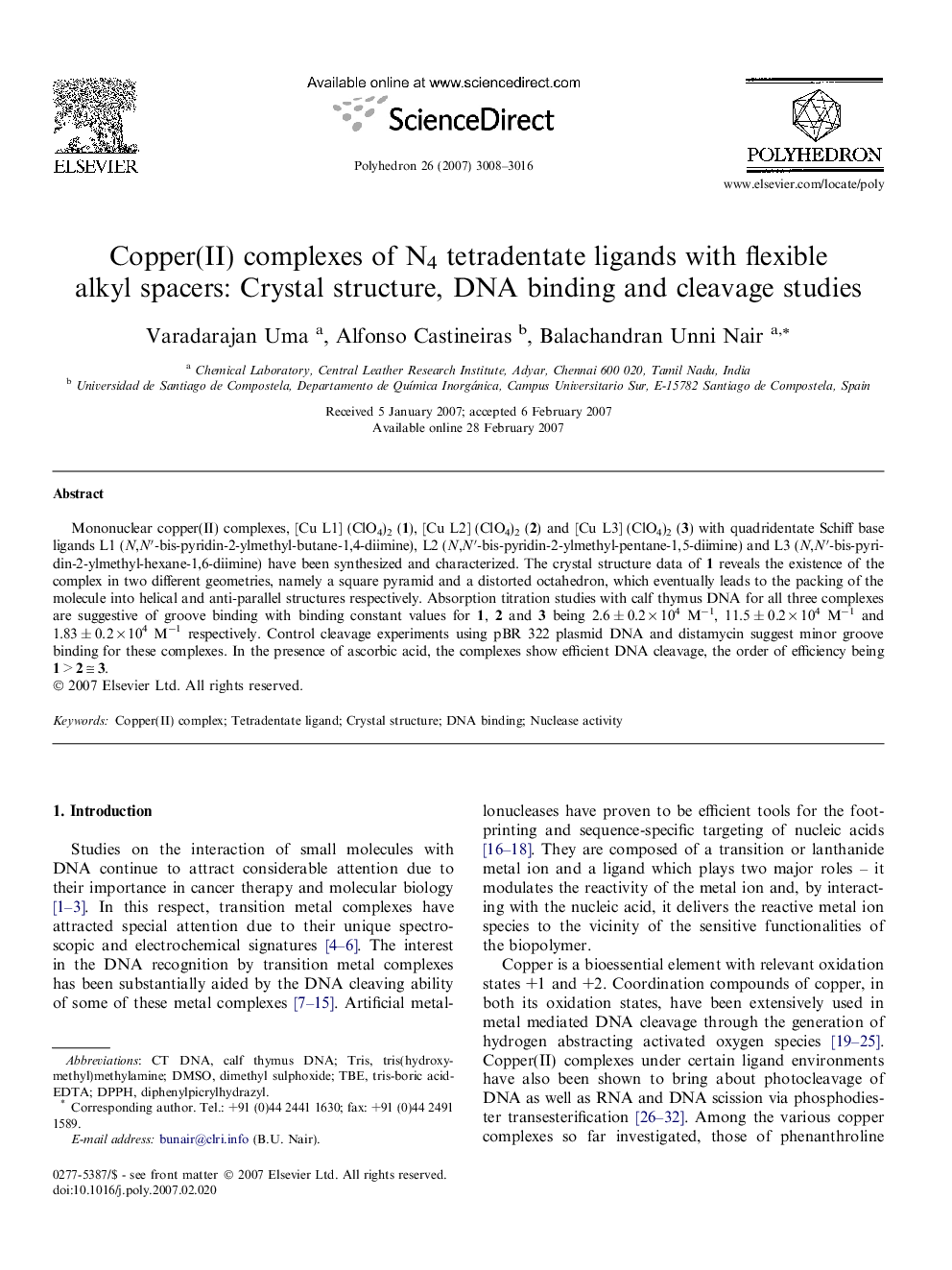| Article ID | Journal | Published Year | Pages | File Type |
|---|---|---|---|---|
| 1338464 | Polyhedron | 2007 | 9 Pages |
Mononuclear copper(II) complexes, [Cu L1] (ClO4)2 (1), [Cu L2] (ClO4)2 (2) and [Cu L3] (ClO4)2 (3) with quadridentate Schiff base ligands L1 (N,N′-bis-pyridin-2-ylmethyl-butane-1,4-diimine), L2 (N,N′-bis-pyridin-2-ylmethyl-pentane-1,5-diimine) and L3 (N,N′-bis-pyridin-2-ylmethyl-hexane-1,6-diimine) have been synthesized and characterized. The crystal structure data of 1 reveals the existence of the complex in two different geometries, namely a square pyramid and a distorted octahedron, which eventually leads to the packing of the molecule into helical and anti-parallel structures respectively. Absorption titration studies with calf thymus DNA for all three complexes are suggestive of groove binding with binding constant values for 1, 2 and 3 being 2.6 ± 0.2 × 104 M−1, 11.5 ± 0.2 × 104 M−1 and 1.83 ± 0.2 × 104 M−1 respectively. Control cleavage experiments using pBR 322 plasmid DNA and distamycin suggest minor groove binding for these complexes. In the presence of ascorbic acid, the complexes show efficient DNA cleavage, the order of efficiency being 1 > 2 ≅ 3.
Graphical abstractA series of copper(II) complexes (1, 2 and 3) of homologous N4 tetradentate ligands have been synthesized and compound 1 has been crystallographically characterized. The complexes exhibit minor groove binding and oxidatively cleave DNA in the presence of ascorbic acid.Figure optionsDownload full-size imageDownload as PowerPoint slide
